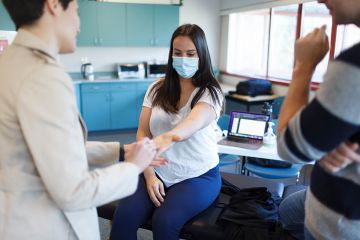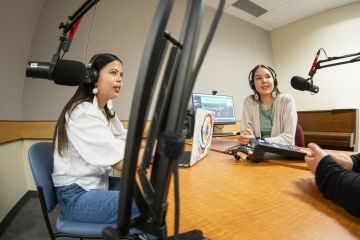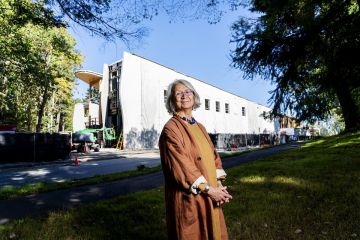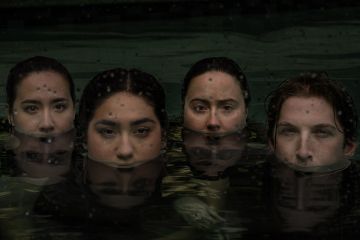ȾEL ̧IȽĆE: Dig into the past to shape the future
- Richard Dal Monte
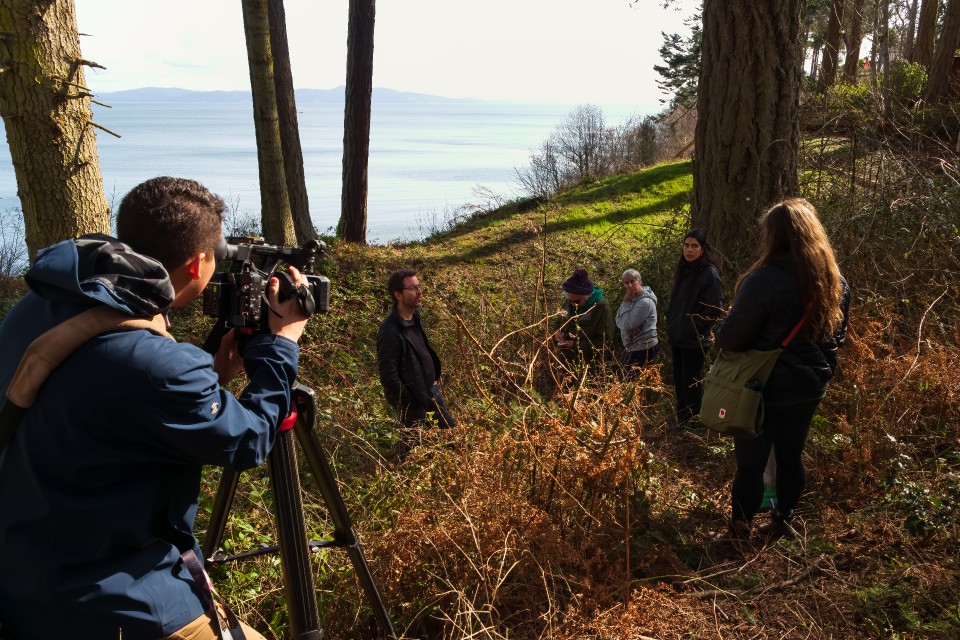
Cordova Bay in the Vancouver Island community of Saanich is known for waterfront homes, the long sandbar beach and tidal lagoon, and small city parks with expansive views of Haro Strait.
But for millennia before white settlers began building on the bay in the late 1800s, the area was a teeming centre of life for the people living in an Indigenous village called ȾEL ̧IȽĆE in SENĆOŦEN or c̓əl̓íɫč in lək̓ʷiŋínəŋ. It was the original village site of the South Saanich Treaty of 1852, one of the 14 “Douglas Treaties.”
Now, led by the Tsawout First Nation and in collaboration with lək̓ʷəŋən and W̱SÁNEĆ First Nations, the University of Victoria’s 2023 archaeology summer field school will dig into the past of this ancient village site and the cultural landscapes that surround it.
Taking place on waterfront parks held by the District of Saanich, and the adjacent intertidal area, the researchers from UVic’s anthropology department will conduct the first research-focused archaeological project ever done in the Cordova Bay area. The collaboration will provide experience-rich training for UVic students alongside youth and cultural workers from W̱SÁNEĆ and lək̓ʷəŋən communities.
The archaeological fieldwork will map the footprint of ȾEL ̧IȽĆE village and surrounding areas using ground penetrating radar and archaeological soil probing techniques, as well as careful exploratory excavations. Alongside these archaeological techniques is the vitally important work to bring SENĆOŦEN language, oral history and local knowledge into the research.
“That place has always had a special place in my thoughts,” says Mavis Underwood, who is a UVic PhD candidate in anthropology and a Tsawout First Nation Elder.
“With so many young learners in the Tsawout community, we need to bring that history back to the place and to the hearts and minds of our children. We need to bring that sense of place and belonging and connection back to them.”
Through land, connecting past and present
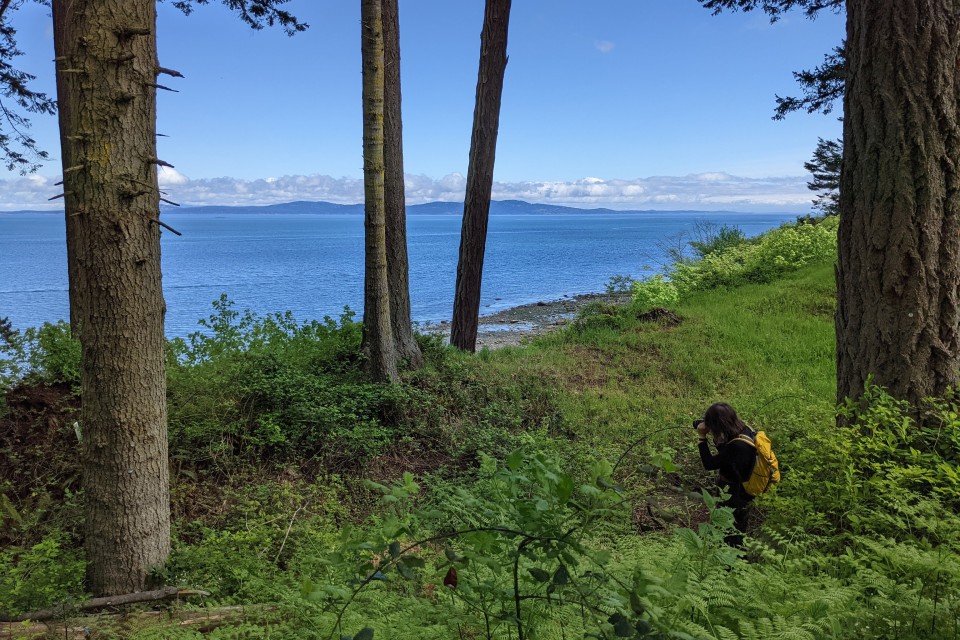
A long-time community leader, Underwood says the field school links past, present and future.
“What does this mean a generation from now or with another generation of grandchildren? Will they remember that they had village sites here? That people died here and they lived here? That’s really important to me, that idea of being alive and being connected to the land and the water,” she says.
UVic associate professor of anthropology Brian Thom is overseeing the UVic-Tsawout Archaeological Field School along with senior archaeologist Heather Pratt.
There are strong oral histories in W̱SÁNEĆ and lək̓ʷəŋən families of their connections to this special place.
—Brian Thom, UVic associate professor of anthropology
“Yet people from the W̱SÁNEĆ communities have said to me they haven’t felt really welcome in Cordova Bay, and unable to harvest foods or have their place names and history recognized. And certainly we know from the many ancient burials disturbed, removed or destroyed by private land development, that their ancestors have often not been treated with dignity here.”
The field school will be about making Cordova Bay welcoming again, through recognizing and uplifting all “the incredible stories attached to this place,” he adds.
Read about SÝEWE Legend Pole in the UVic Quad
The story of ȾEL ̧IȽĆE / c̓əl̓íɫč
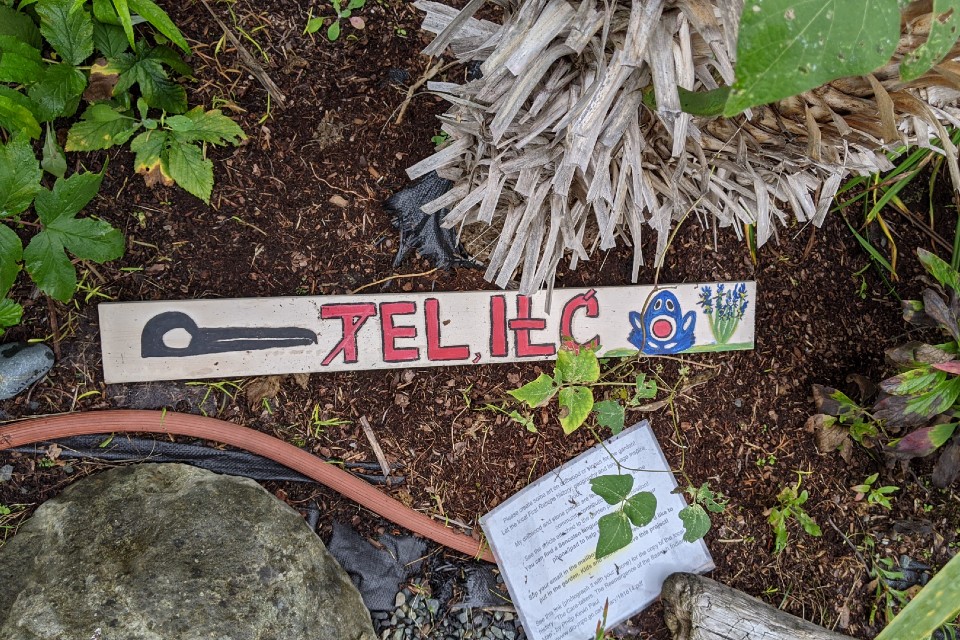
The District of Saanich, through the recently completed Cordova Bay Area Plan and the 2021 ÁTOL,NEUEL Memorandum of Understanding with the W̱SÁNEĆ Leadership Council, has committed to protecting ancestral sites and public education about Indigenous Peoples’ histories in Saanich.
Education of UVic students and local Indigenous youth are critical components of the field school. Students will learn to recognize elements of an ancient village site—things like house floors or kitchen hearths—and to document intertidal features such as fish traps and canoe runs. Youth workers and UVic students will gain a key certification for working on other archaeological projects.
The cultural work and connecting to the ancestors is a key piece of the project for Thom and Underwood.
Keep dreams alive
The potential discovery of ancient fish traps is not just about their archaeological value, says Underwood, but about the history and ceremonies associated with them and the land, when the Tsawout would ask the salmon to come back and feed their families.
“In a world where there’s not a lot of opportunity for hope or looking forward, or maybe changing the climate,” Underwood says, “you can perform ceremony, you can perform ritual, you can perform prayer. And that’s your first foundation for hope, it’s your first foundation for putting a dream in your mind and keeping it alive.
"That’s what I want to see: people getting excited about those things again.”
Read more about the field school at uvic.ca/cordovabay.
Read more about the Backgrounder for the UVic-Tsawout 2023 Archaeological Field School at ȾEL¸IȽĆE (Cordova Bay)
Photos
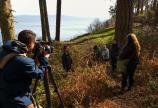
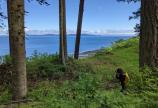
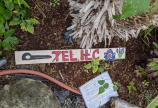
In this story
Keywords: Indigenous, languages and linguistics, community, reconciliation, reconcile land
People: Brian Thom

